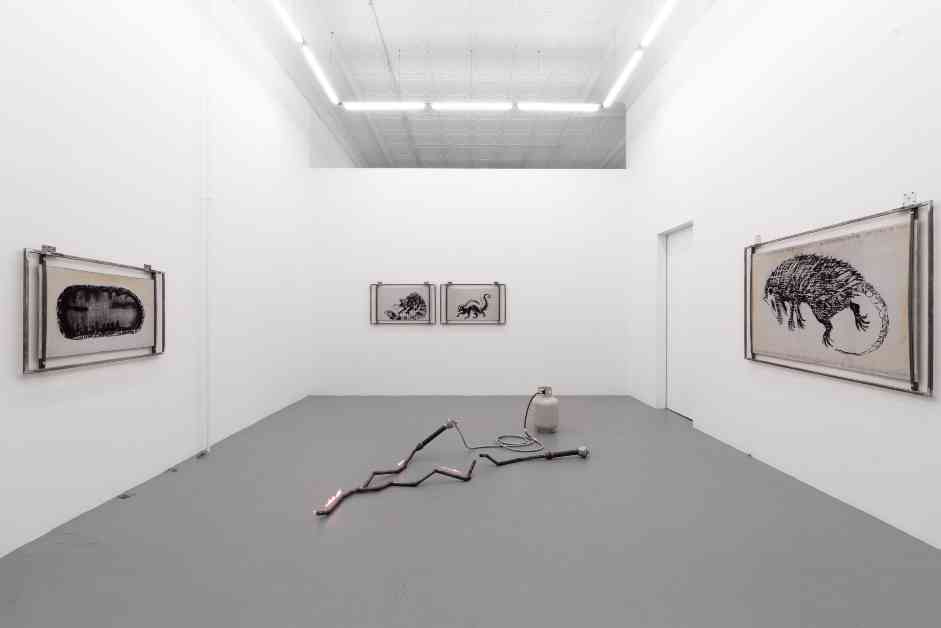Alberto Ortega Trejo’s provocative art exhibition at Prairie in Chicago delves into the rich cosmology and troubled relationship to land of the Otomí people, an Indigenous group native to the Mezquital Valley in Mexico. As a descendant of this community, Trejo’s work is deeply rooted in exploring their history and struggles, particularly in the face of environmental crises and petropolitics.
The centerpiece of the exhibition is a fire-spewing metal sculpture titled “The world was created by fire, by dance (Mapa del sol muerto)”, symbolizing the abstract map of oil pipelines from Mexico to the U.S. This piece serves as a stark reminder of the numerous catastrophes and tensions surrounding these pipelines, adding a palpable sense of unease to the space. Surrounding this sculpture are three charcoal drawings on concrete depicting convulsing rodents, creating a cryptic and foreboding atmosphere.
In the back room of the exhibition, visitors are confronted with an uncanny metal tub that once held beer during the opening but now sits empty, with maguey fibers rotting at the bottom. These elements, along with the eerie drawings and sculptures, contribute to the overall sense of impending doom and tension that permeates the space.
Trejo’s work invites viewers to interpret and engage with the art on their own terms, without the artist’s direct narrative guidance. The exhibition statement itself is sparse, offering only a cryptic insight into the night belonging to the Otomí people and their connection to the Devil. This lack of explicit storytelling allows for a more immersive and personal experience for visitors, prompting them to draw their own conclusions and interpretations.
For those interested in gaining more insight into Trejo’s art and process, the artist offers walk-throughs during open hours on Thursday afternoons. This provides a unique opportunity to delve deeper into the intricate mental outgrowths that inform his work and to engage with the themes of the exhibition on a more intimate level.
Trejo’s exploration of the nocturnal beings in his art serves as a powerful metaphor for speaking words of truth. Through his evocative sculptures and drawings, he challenges viewers to confront uncomfortable truths about the history and struggles of the Otomí people and the broader issues of environmental degradation and political exploitation.
In conclusion, Alberto Ortega Trejo’s exhibition at Prairie in Chicago offers a thought-provoking and immersive experience for viewers, inviting them to engage with complex themes and narratives through his striking art pieces. By delving into the cosmology and struggles of the Otomí people, Trejo sheds light on important issues surrounding land, environment, and identity, prompting reflection and dialogue among visitors.


